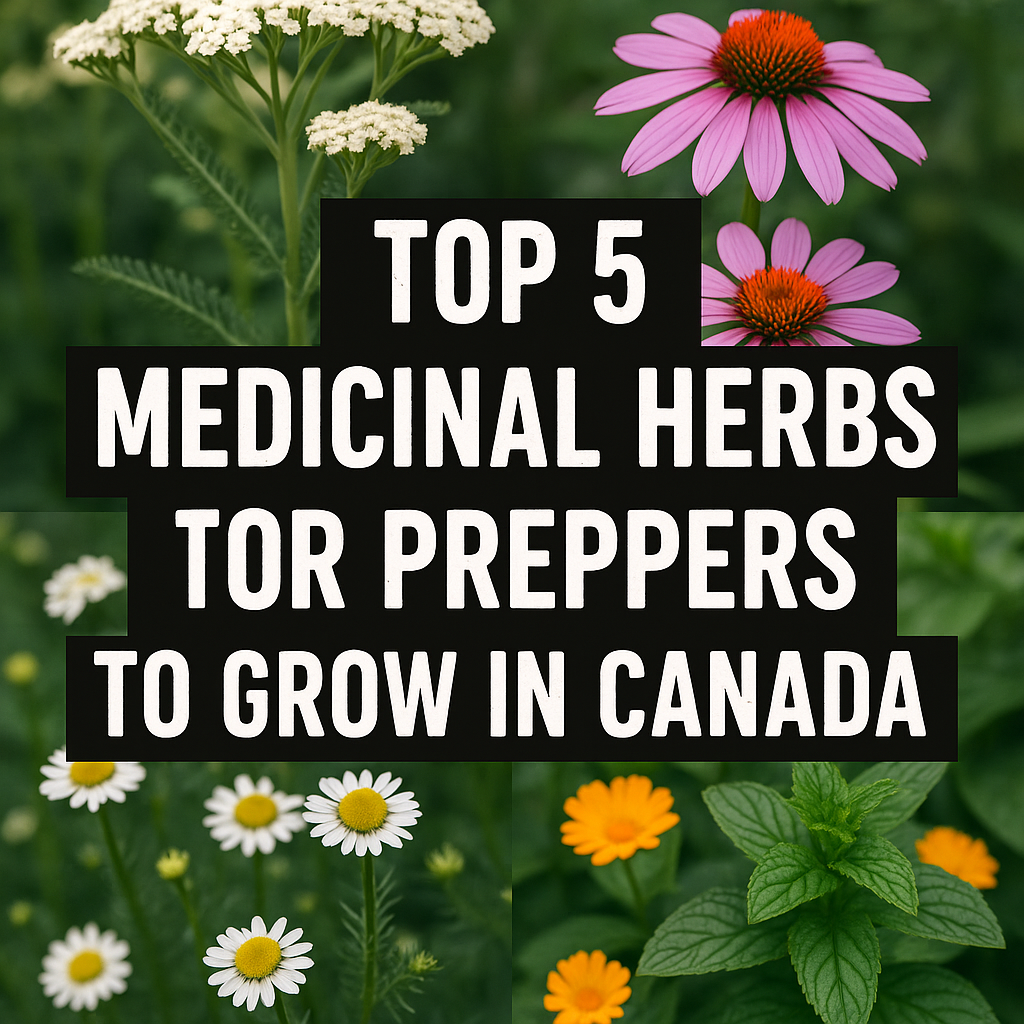In an emergency or grid-down situation, access to conventional medicine might be limited or nonexistent. That’s why self-sufficiency isn’t just about food and water—natural remedies and medicinal herbs are essential tools in any prepper’s toolkit.
Fortunately, many powerful medicinal plants can be grown right here in Canada, even with our short growing seasons and unpredictable climate. Here are the top 5 medicinal herbs every Canadian prepper should grow, whether you’re in a rural homestead or a backyard garden in suburbia.
1. Yarrow (Achillea millefolium)
Why Grow It:
Yarrow is a hardy perennial that thrives in almost any Canadian zone. It’s been used for centuries as a natural wound healer, thanks to its anti-inflammatory and antiseptic properties.
Uses:
- Stops bleeding (apply crushed fresh leaves directly to wounds)
- Reduces fevers (use as a tea)
- Soothes digestive issues
How to Grow:
- Cold-hardy and drought-resistant
- Prefers full sun and well-drained soil
- Propagates easily from seed or division
2. Echinacea (Echinacea purpurea)
Why Grow It:
Also known as purple coneflower, echinacea is renowned for boosting the immune system and shortening the duration of colds and infections—a crucial asset in any survival scenario.
Uses:
- Immune support (root or flower tea/tincture)
- Anti-inflammatory
- Natural antibiotic
How to Grow:
- Prefers full sun and well-drained soil
- Perennial in zones 3-9 (good for most parts of Canada)
- Flowers in the second year, so start early
3. Chamomile (Matricaria chamomilla)
Why Grow It:
Chamomile is not just a calming tea—it’s also a natural anti-inflammatory, antispasmodic, and mild sedative. Great for stress, digestive upset, and sleep issues during high-stress situations.
Uses:
- Relaxant and sleep aid (tea)
- Soothes gastrointestinal distress
- Anti-inflammatory wash for skin irritations
How to Grow:
- Annual, but self-seeds readily
- Thrives in cooler climates
- Needs full sun and moderate water
4. Calendula (Calendula officinalis)
Why Grow It:
Also known as pot marigold, calendula is a bright, cheerful flower with strong antifungal, antiviral, and wound-healing properties.
Uses:
- Healing salves and poultices for cuts, burns, and rashes
- Anti-inflammatory and antibacterial
- Can be infused in oil or made into a tincture
How to Grow:
- Hardy annual, tolerates cooler temperatures
- Full sun preferred
- Deadhead flowers to prolong blooming season
5. Peppermint (Mentha × piperita)
Why Grow It:
Peppermint is more than just a refreshing tea—it’s also a powerful herb for pain relief, digestion, and respiratory support.
Uses:
- Soothes upset stomach and nausea
- Relieves headaches (especially when used as a tea or infused oil)
- Decongestant when used in steam inhalation
How to Grow:
- Perennial, but aggressive—best grown in containers
- Prefers partial shade and moist soil
- Harvest regularly to prevent it from taking over
Final Thoughts
Growing your own medicinal herbs not only builds resilience but also gives you immediate access to natural, effective remedies when the pharmacy isn’t an option. All five of these herbs are ideal for Canadian climates, easy to grow, and proven to be useful in everyday and emergency scenarios.
As always, make sure you research proper dosages and contraindications for any medicinal herb, especially if you’re on medications or have existing health conditions.
Prep smarter. Grow your medicine. Stay resilient.




